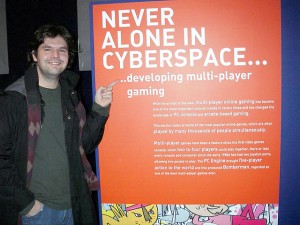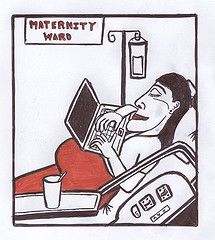
During election season, we are treated to story after story about how candidates have made themselves out of nothing. Wisconsin Governer Scott Walker, locked in a tight reelection battle with Mary Burke, his Democratic opponent, has made a career of turning talk about his lack of a college degree into a story about upward mobility rather than academic insufficiency. Much of Joe Biden’s appeal as both a Senator and a Vice President comes from his salt of the earth appeal as the son of father who faced financial ruin, lived with his grandparents, and, through hard work and dedication, made something of his life. Candidates on both sides of the aisle tap into the discourse of upward mobility to demonstrate that they understand the struggles of the people they hope will elect them.
When candidates talk about how they have pulled themselves up by their bootstraps on the campaign trail, they’re doing more than lauding their own humble pasts to gain voters’ trust. They’re also tapping into a social narrative that’s been used throughout American history to determine what counts as economic success and who it’s available to. At the same time as it aligns candidates with desired swaths of the electorate, especially middle-class whites who turn out in numbers, it also implies a subtle distance between candidates and social problems. All of us can do this, if only we try hard enough, goes the implied reasoning, and if you can’t do it, that’s on you. Who can’t do it? As usual in American society, that would be the out-groups: non-whites, immigrants, LGBT people, and the disabled. Advocates of the bootstraps school of social mobility like to counter this critique by linking economic success to cultural values. They point out that immigrant Jews have largely succeeded economically, while African Americans still struggle, and attribute this to a set of American cultural values that Jews share, but blacks don’t.
In an excellent longform Slate article on this topic, John Swansburg cites sociologist Stephen Steinberg’s 1981 book The Ethnic Myth, a critique of what Steinberg calls the “Horatio Alger Theory of Ethnic Success,” or the belief that all social outgroups start with the same set of disadvantages. Most early 20th century Jewish immigrants, Steinberg argues, came from urbanized, industrial European cities, where they gathered “years of industrial experience and concrete occupational skills that would serve them well in America’s expanding industrial economy.” Most American blacks, on the other hand, learned farming and field work—skills that benefited them little as they moved to the industrial North after Reconstruction.
When Scott Walker, Joe Biden, or any other candidate for office talks about his or her humble past, he or she is making a subtle implication that the problems of disadvantaged groups in America are mostly cultural, rather than economic or structural. I know how to work hard and I know you do too, so elect me and I’ll make sure that our kind of work is rewarded. And those others, whose work is never rewarded? Well, they’re just not working hard enough.
For more on how candidates construct narratives to court voters, read (or listen to!) Jeffrey Alexander’s “Heroes, Presidents, and Politics,” now in podcast form.









